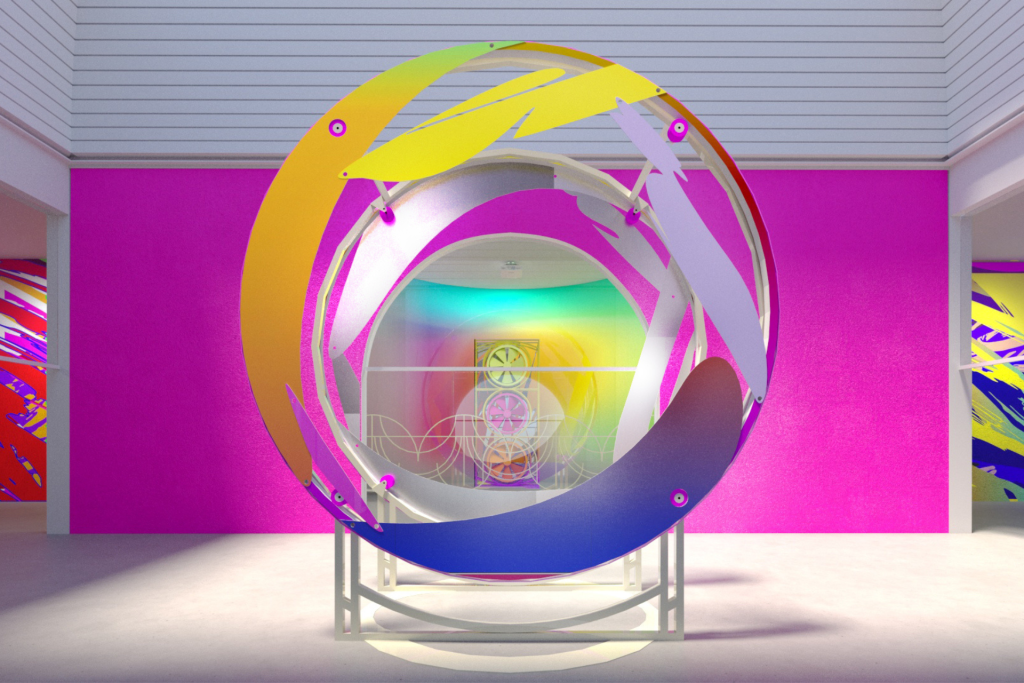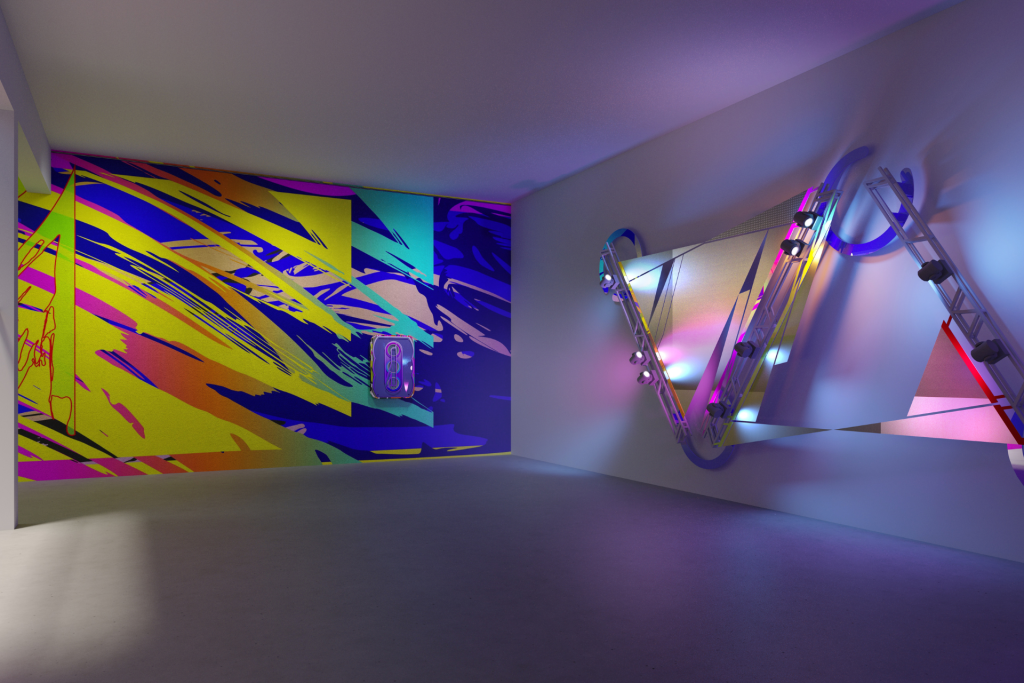Interview with Márton Nemes
Painter Márton Nemes will be exhibiting at the Hungarian Pavilion of the Venice Biennale next year. The artist, who lives and works in New York, is currently painting for The Armory Show art fair held in September, before turning his attention to preparing for the biennial. His life has been very busy since the Venice participation was decided, there is no stopping, the interest in his work and in his person is intensifying.
What do you perceive as the change in the interest in you?
I keep getting emails, two galleries in New York, one in Chicago, one in Madrid reached out to me regarding solo exhibitions, and last but not least the acb Gallery in Budapest also wanted a three-room solo exhibition. But because of The Armory Show and especially the preparations for the Biennale, I have to divide my time and pace myself. Such an important event requires conscious preparation, so I took a month off to gather the right amount of emotional energy. Since I had my first solo exhibition ten years ago at the Deák Erika Gallery, I have been working non-stop. Last year I had three solo exhibitions on three continents, I moved to New York and built a new studio. I am actively seeking balance at the moment.
The Venice Biennale is a huge opportunity, does it put pressure on you or rather inspire you?
It was a great honour when the jury commissioned by the Ludwig Museum chose me. It puts a lot of pressure on you when you’re not just planning an individual exhibition, but a pavilion where you represent a whole country. But of course, stress also inspires me. I’ll do my best to “take advantage of the opportunity”, but I think it’s never up to the artist. Here in New York, I can sense that I am being treated as a „biennial artist” and the Armory solo booth is very much anticipated as well, which is also an opportunity for acb Gallery.
I’m just doing my job the way I normally do and I’m happy when people like my work. I’ve suddenly become more interesting, but I’m still the same person. I prefer a slow growth. That’s why I resisted now when a gallery in Paris wanted to double my prices after the news of the Biennale, because I don’t believe in immediately taking advantage of the demand. A fast rise can often be followed by a fast fall, and I want to be coherent and consistent. I’ve been drawing and painting since I was seven, I’ve been on this road for more than twenty years, and the Biennale is an important stage, but I hope there will be another section of the road beyond that too.
What is the goal? You seem very relaxed and very conscious at the same time. What are you heading towards?
I’ve been very conscious all my life, but as time goes by, I’m starting to ease into it. You can’t rush anything, and you will get to what you believe you can get to in the end. Back when I didn’t know so much about the world that I’m in now, I imagined that once an artist got into a top gallery, they could never get out. I had a vision of reaching the top of the mountain, where there was a lookout and fresh air, where I could then rest. I thought there was a performance that could not be undone, but that’s an illusion, because in this system anyone can drop out and reset themselves at any time.
I remember in 2015, in New York, when I entered the David Zwirner Gallery for the first time in my life, I felt that if I could be here, I would feel like this is where I’d been heading. Maybe for me Zwirner is still the mountain top, although the acb Gallery sure is already a beautiful high point too.
Why did you move from London to New York?
In my opinion constant renewal helps creation. There are several types of artists. Some people think up an idea and start creating it over and over again within a given framework, making only small changes and coming up with variations. I am the kind of artist who always wants to do something different. I move within a defined system of thought, structurally and conceptually there are a number of similarities between my works, but I always need a fresh impulse, something new to react to.
I started changing my environment, my places of residence, to push myself out of my comfort zone. Professionally, New York is the centre of the world, and it’s great to be where my idols lived. Artist, who have been a source of inspiration from my childhood, such as Willem de Kooning, Warhol and Basquiat all created in this city. Ilona Keserü, Imre Bak are important in a different way, that’s where I came from, but this here is a different set of influences.
Some of the works by Márton Nemes in the collection managed by the MNB:
Temporary Images 03 (2017), Tomorrow 15 (2019), Ghosting Love 06 (2019)
What is the London influence in your painting and how is the New York scene different?
In England I liked the slightly formalist approach, the technological painting. London is very bipolar, you can perceive the ultra-rich and the ultra-poor at the same time, they are intertwined, they contrast and it all comes out as a vibrant hybrid art, which really resonated with me. The two extremes are not only on the social level, in art there is a big gap between the YBAs (Young British Artists, a group of young British artists who first exhibited together in 1988 and later became major figures in contemporary art – editor) and the classical tradition.
In comparison, in America the great 20th century traditions are very much alive today and along with the trends that came out of them, I encountered narratives that I hadn’t expected. Gender issues or the subject of skin colour are much more significant concerns for artists here. In London, the focus is more on the materiality of the work, in New York, there are social issues in the work.
How does all this fit into my art? I proceed in the path of the abstract expressive and modernist tradition, trying to formulate what a splash of colour or a vibration means and what can be done with them in the 21st century. I am beginning to sense that a painting has a soul, energy, it is an entity.
Your biennial project is called Techno Zen. What does it mean?
It’s a coordinating compound of words, telling existing stories, but its essential element is still being in the middle, all at once. As a Central European, I think it’s a kind of a knowledge to observe from the middle, when most people want to stand on one side or the other.
For me, techno is a kind of pulsation, throbbing, there is noise and technology in it. Zen is the other side, silence and harmony, also looking inwards increasingly appears in my work, a kind of meditative state.
For me, the image has a body. Like a box, it has a front, a back and a middle, even if there is nothing in the middle but air. I once saw a documentary on the making of whisky where they explained that the barrels are never filled to the top, so the alcohol evaporates into the top air space, and then as the cork is pulled out, the evaporating whisky becomes part of the angels. In my case, this part of the picture that is meant for angels is the inside, which is opened up with slits, and I put mirrors behind the openings to give the impression that there is something there too. This something, the existence between techno and Zen, this is the essential part.
But now the general belief is that there is no middle ground, that the rule is that everyone has to be connected to something.
I, on the other hand, would argue that being in the middle is a valid position, and that is the only place where the whole can be seen. Painting always consists of three layers: foreground – middle ground – background. The Hungarian pavilion is very well suited for the representation of the trinity, we will work with three different methodologies: sounds, colours and forms. Usually in a painting there is colour and form, and I have brought in sound as the third element. I’m going to create a space where you have to stand in the middle to experience wholeness, if you go to one side you lose it. Music and the picture come together, and you can only see the full spectrum of the colours of the rainbow when you stand in the middle. I think for many of us, and in many cases, we should position ourselves in the middle.
You mentioned several times that you listen to music while creating. What music is it right now?
Now I prefer quiet more often. Music will be playing in the Hungarian pavilion, but I would like to bring back the active attention. When you focus on something, observe something, that too is a kind of meditation. In Venice, I want to bring back the experience of sitting on a museum bench and studying a painting for minutes. I would like to make sure that whoever enters the Hungarian Pavilion will be in the ‘here and now’. Because this presence is what is missing the most in our time. We either dwell on the past or worry about the future, and are rarely in the „here and now”. I think that’s why the reception of artistic content can be so magical, even cathartic, because it keeps you in the present.








